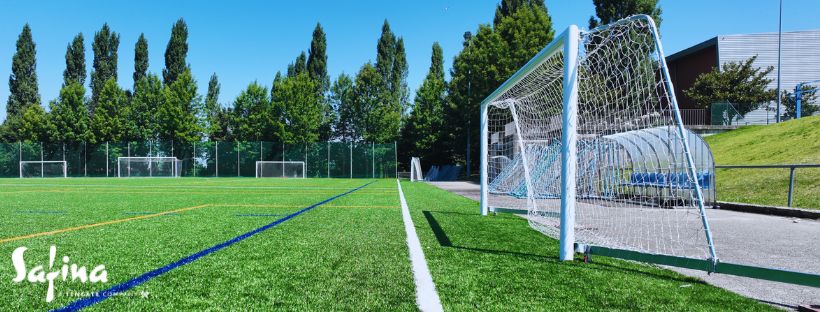
The Value of Artificial Grass in Real Estate Projects
In today’s competitive property market, differentiation is key. Whether you’re planning a commercial building, residential development or public infrastructure, every material choice contributes to the overall performance, appeal and profitability of the project.
Artificial grass is no longer just a landscaping trend—it’s a strategic solution that adds long-term value in ways many still overlook.
Enhancing Visual Appeal with Low Maintenance
Green, well-kept spaces immediately elevate the visual quality of any development. Artificial grass ensures this aesthetic—without the seasonal fluctuations, irrigation needs, or maintenance burdens of natural turf. This not only improves the day-to-day image of the property but also increases its perceived value among tenants, investors and end users.
Developers benefit from this consistency: a manicured, evergreen look from day one, with no delay for turf establishment or seasonal setbacks.
Long-Term Cost Efficiency
Beyond the installation phase, artificial grass delivers ongoing cost savings. There’s no need for mowing, fertilisers, irrigation systems, or regular reseeding. Over the lifetime of a project, these savings compound—especially valuable in high-traffic areas where natural grass would degrade quickly and require frequent repair or replacement.
For facility managers and building owners, these predictable, low operating costs translate into a stronger financial model.
Sustainable Urban Development
Artificial grass contributes to sustainable development goals by reducing water consumption, minimising the use of harmful chemicals, and offering recyclable backing options. In large-scale urban projects where green certification is a priority, high-quality synthetic turf can support LEED and BREEAM criteria.
At Safina, we use environmentally conscious production practices and durable materials to ensure our products are not only sustainable—but built to last.
Design Versatility in All Environments
One of artificial grass’s greatest strengths lies in its versatility. It can be installed on rooftops, balconies, courtyards, traffic islands, or even indoor spaces. This flexibility gives architects and planners more freedom to integrate green space into urban contexts where soil and natural grass would be impractical or unsustainable.
It’s also a powerful solution in infrastructure projects such as transit hubs, schools, hospitals, and public buildings—areas where durability, hygiene, and ease of maintenance are critical.
Value Creation for Investors and End Users
Ultimately, real estate is about returns—and artificial grass can play a small but significant role in increasing them. Whether by enhancing the property’s image, reducing operational costs, or improving tenant satisfaction, synthetic turf offers measurable ROI across the asset lifecycle.
For investors focused on long-term performance and sustainability, it’s a material choice that makes strategic sense.
Ready to Integrate Artificial Grass into Your Next Project?
At Safina, we partner with construction companies, architects, and infrastructure planners across Europe to deliver high-performance synthetic turf solutions tailored to professional demands. From consultation to delivery, we ensure industrial-grade quality, logistics precision, and full support.
Contact us to discuss how we can add value to your next development.







